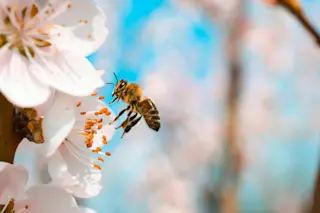Math is famously divisive. Some people like to say they’re not “math people” if they have trouble with the subject (though, that might not actually be a healthy approach). Well, guess who have turned out to be math people? Honeybees!
Devoted readers may recall some past stories on this front. Almost exactly a year ago, we learned that bees can understand basic numbers, including the semi-abstract concept of zero. Then, in February, scientists said they’d discovered not only that bees can count, but that they can also do basic arithmetic.
Now the honeybee-math trilogy is complete. With a new study published Tuesday in Proceedings of the Royal Society B, the same international team of researchers behind those discoveries has announced that bees are also capable of linking numerical symbols to actual quantities, and vice versa.
That means honeybees can equate a symbol like the numeral 2 to the actual, abstract ...














